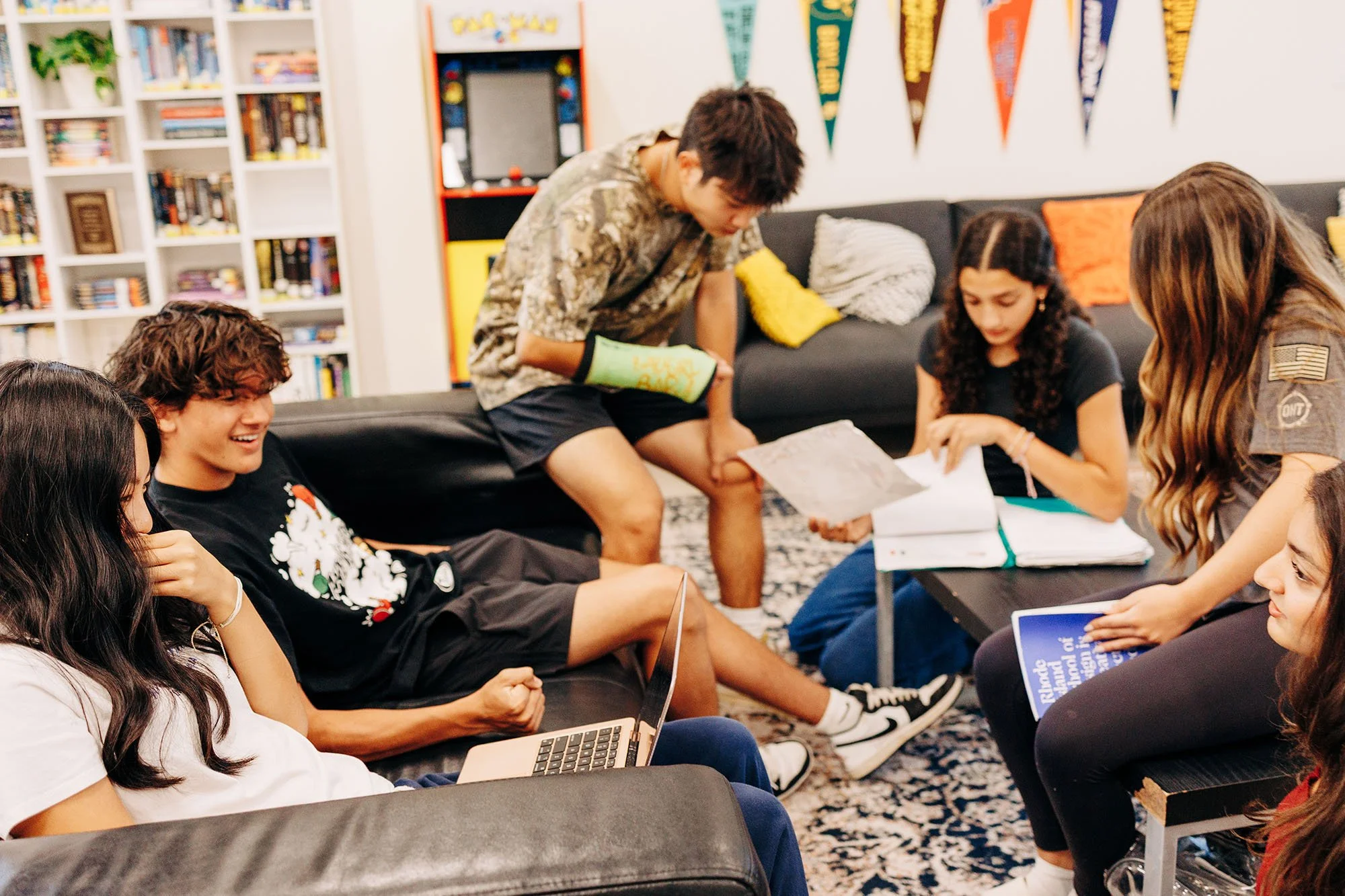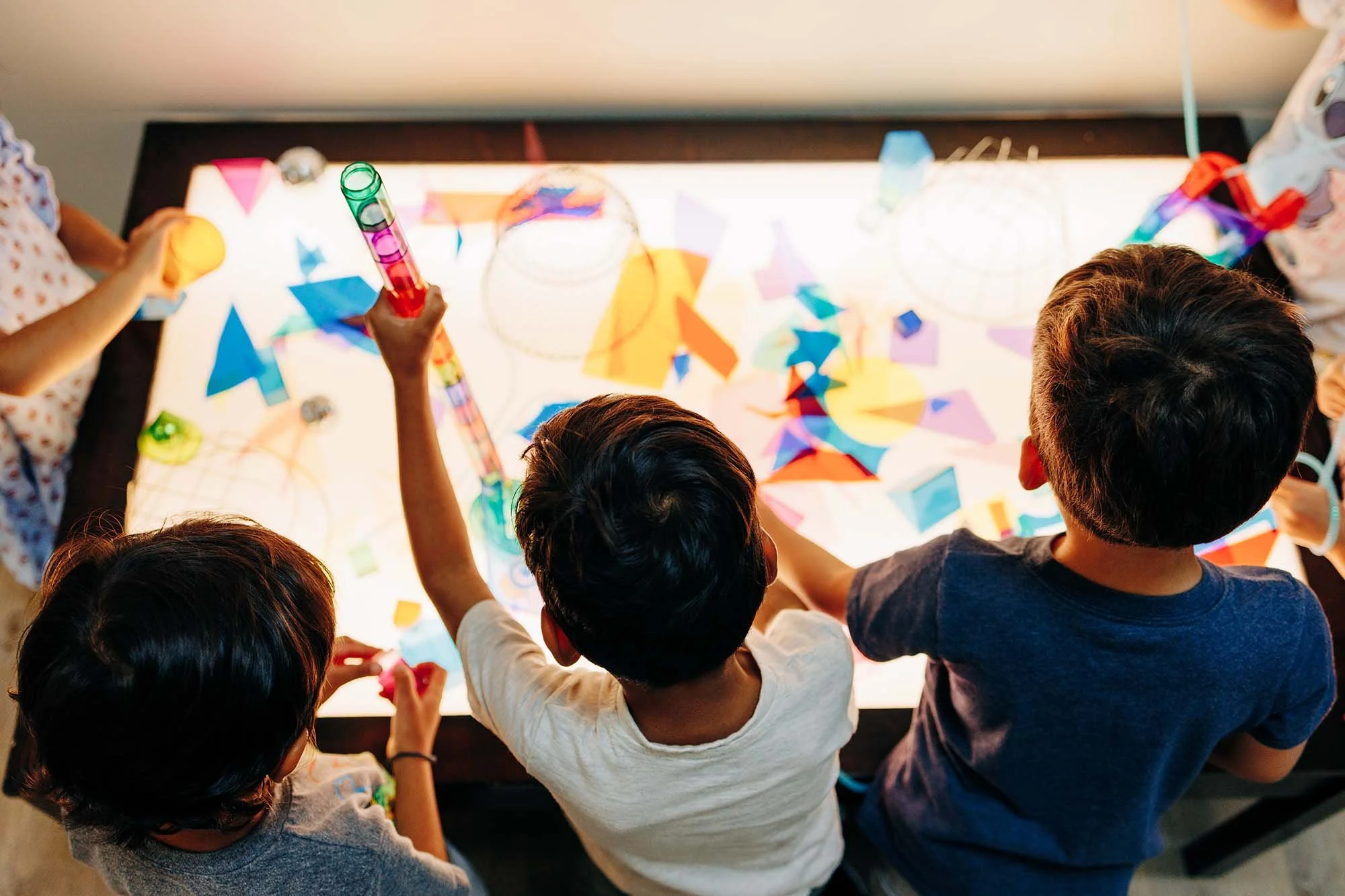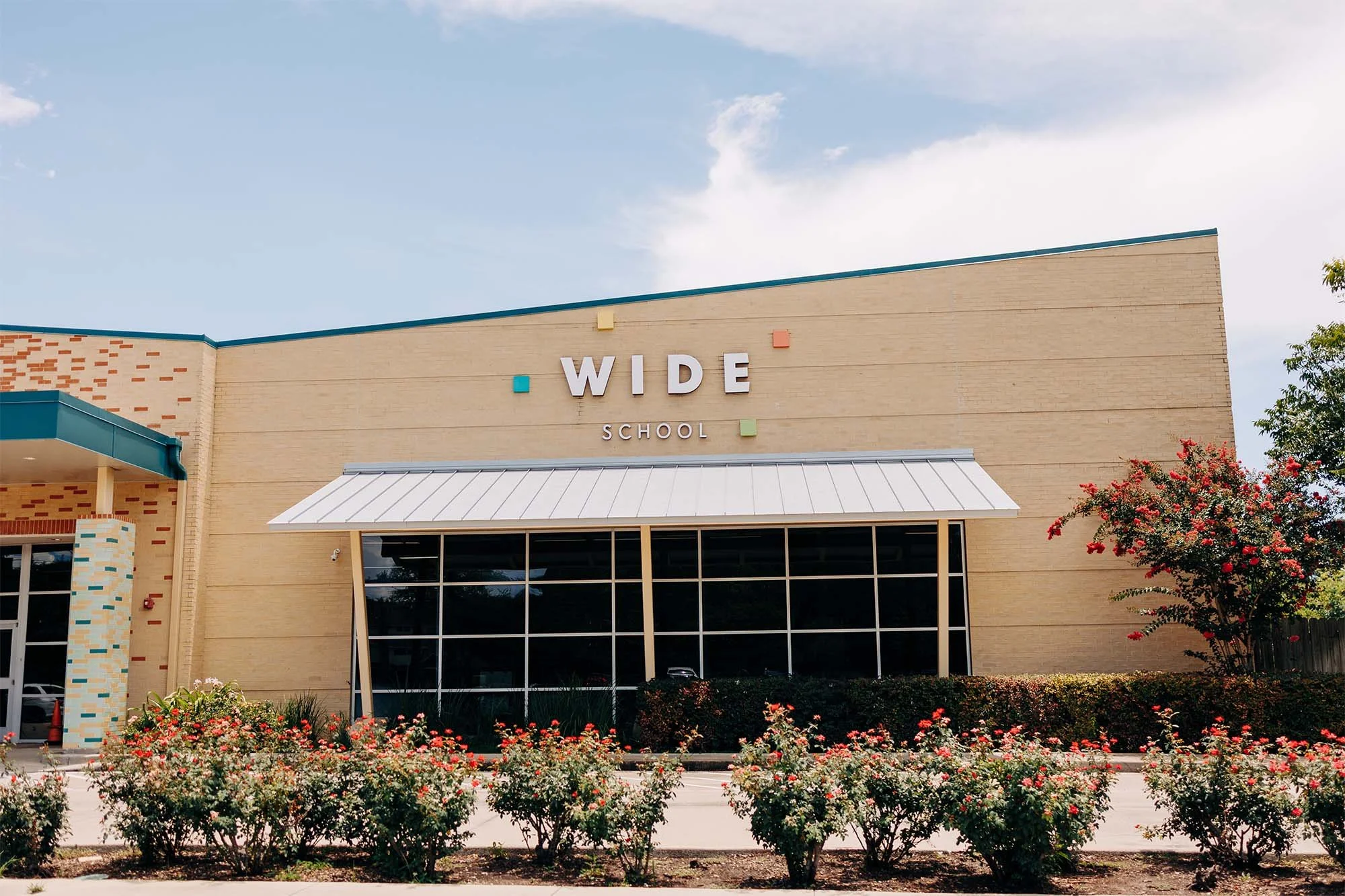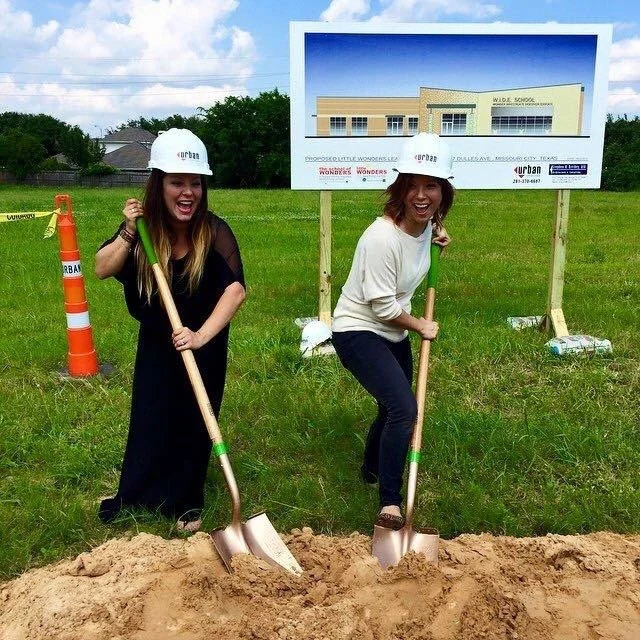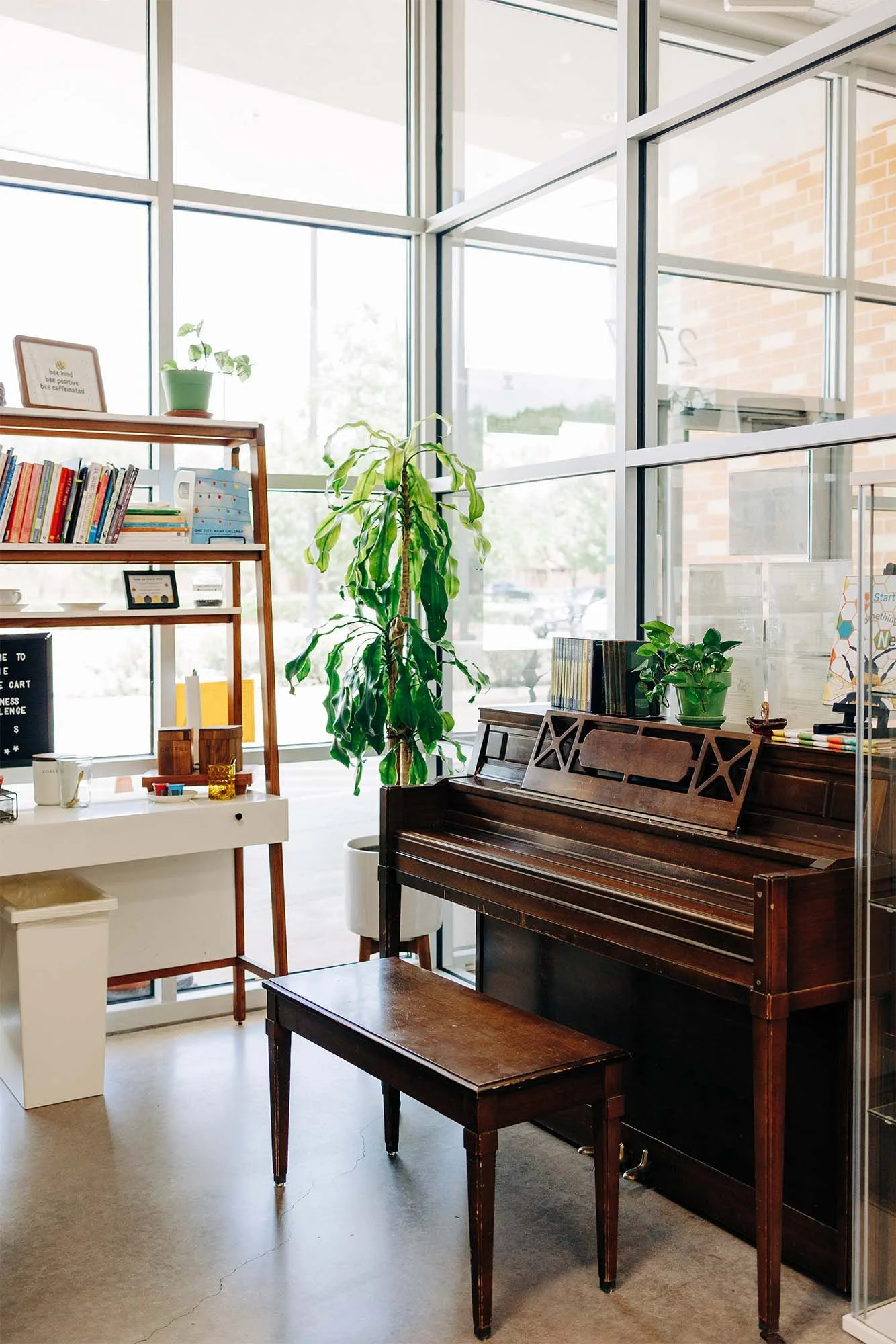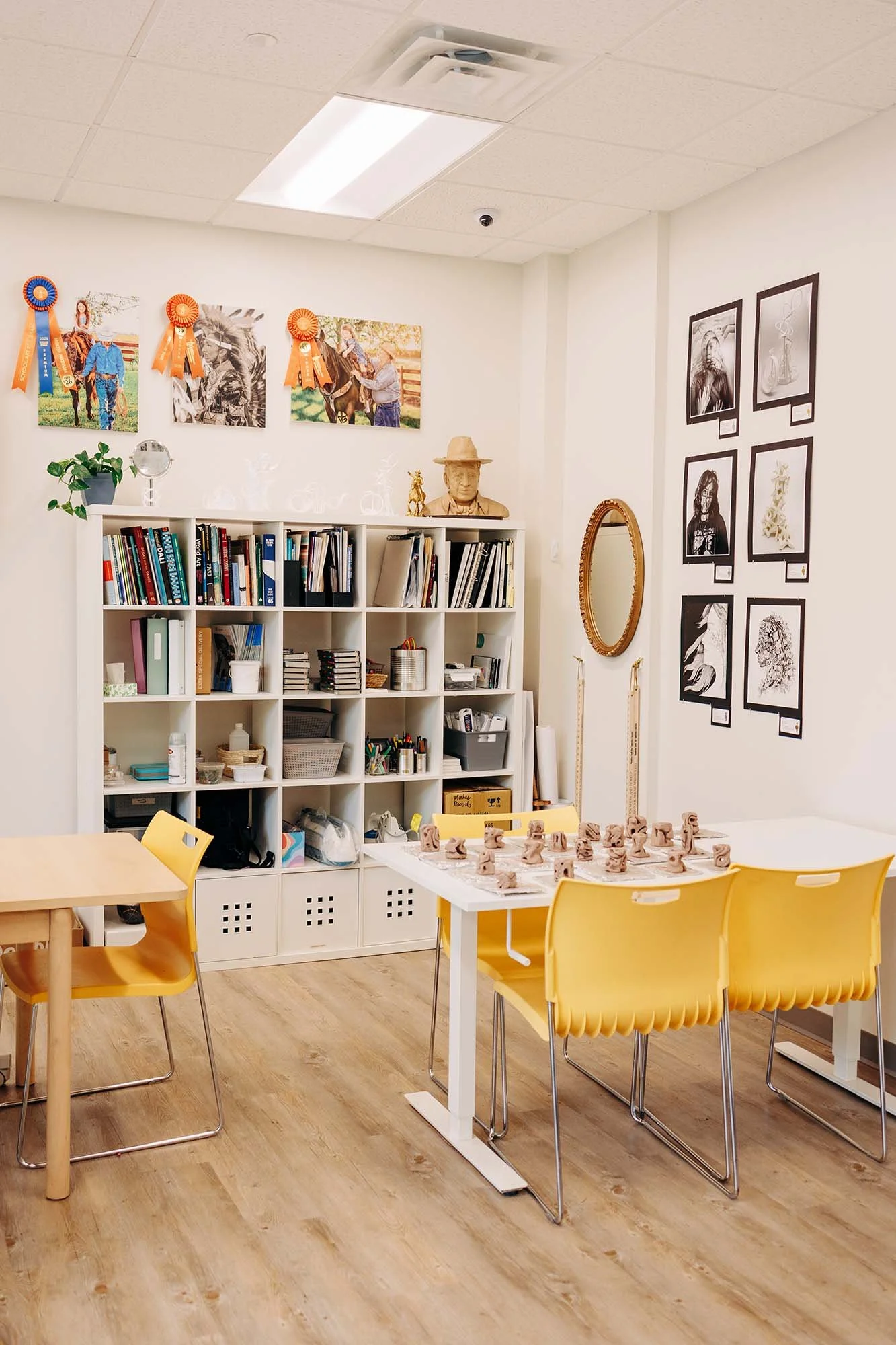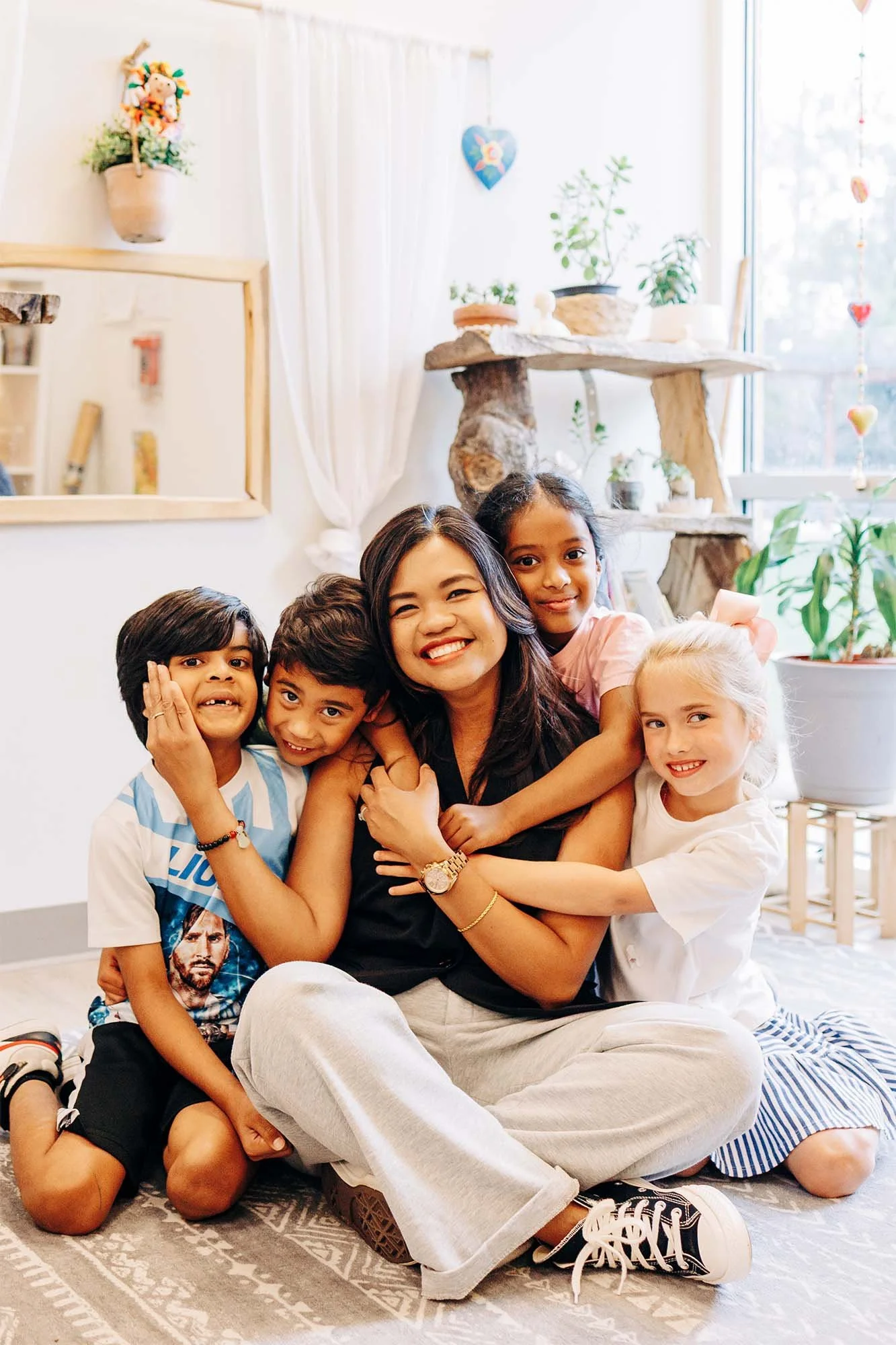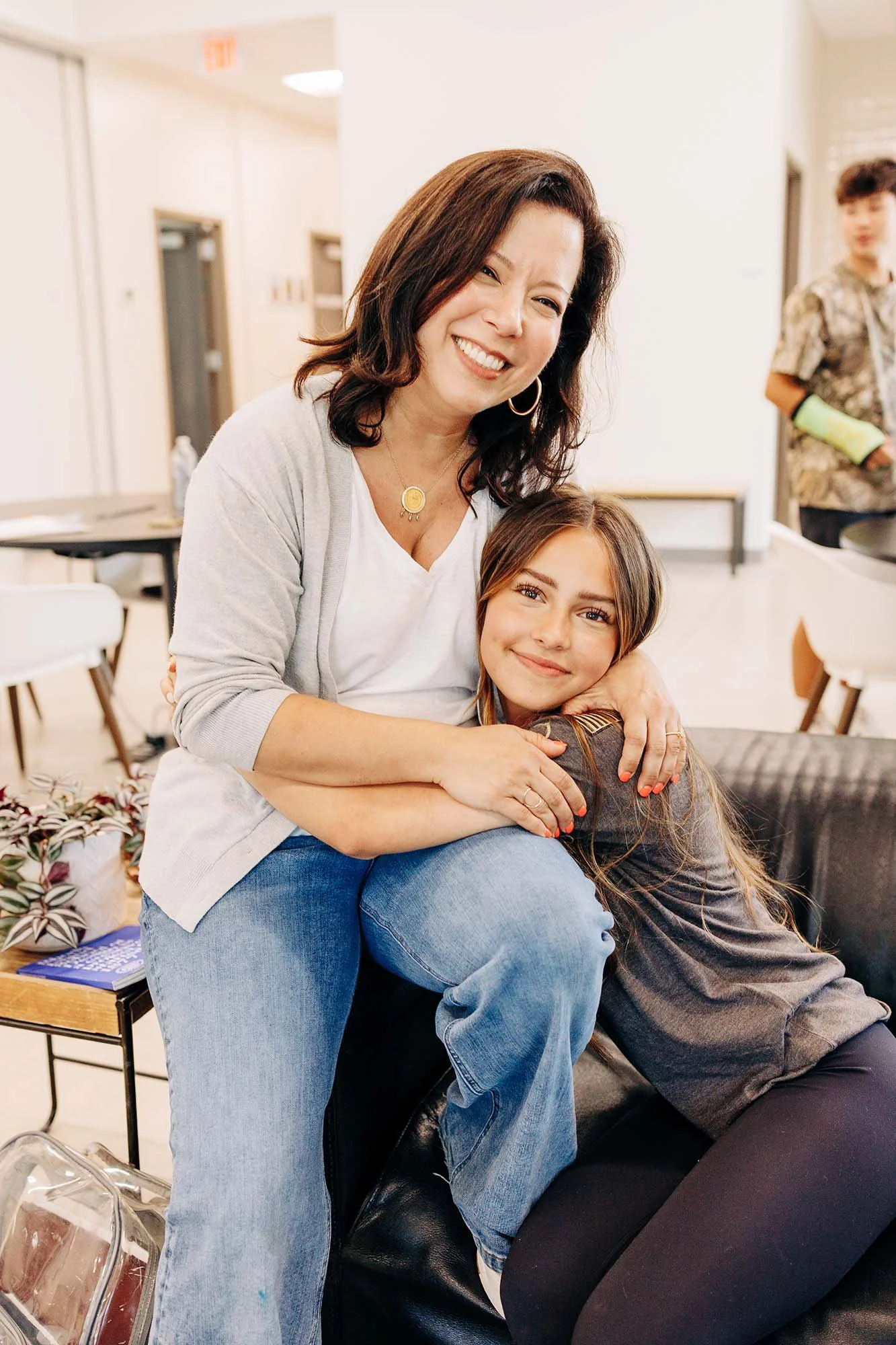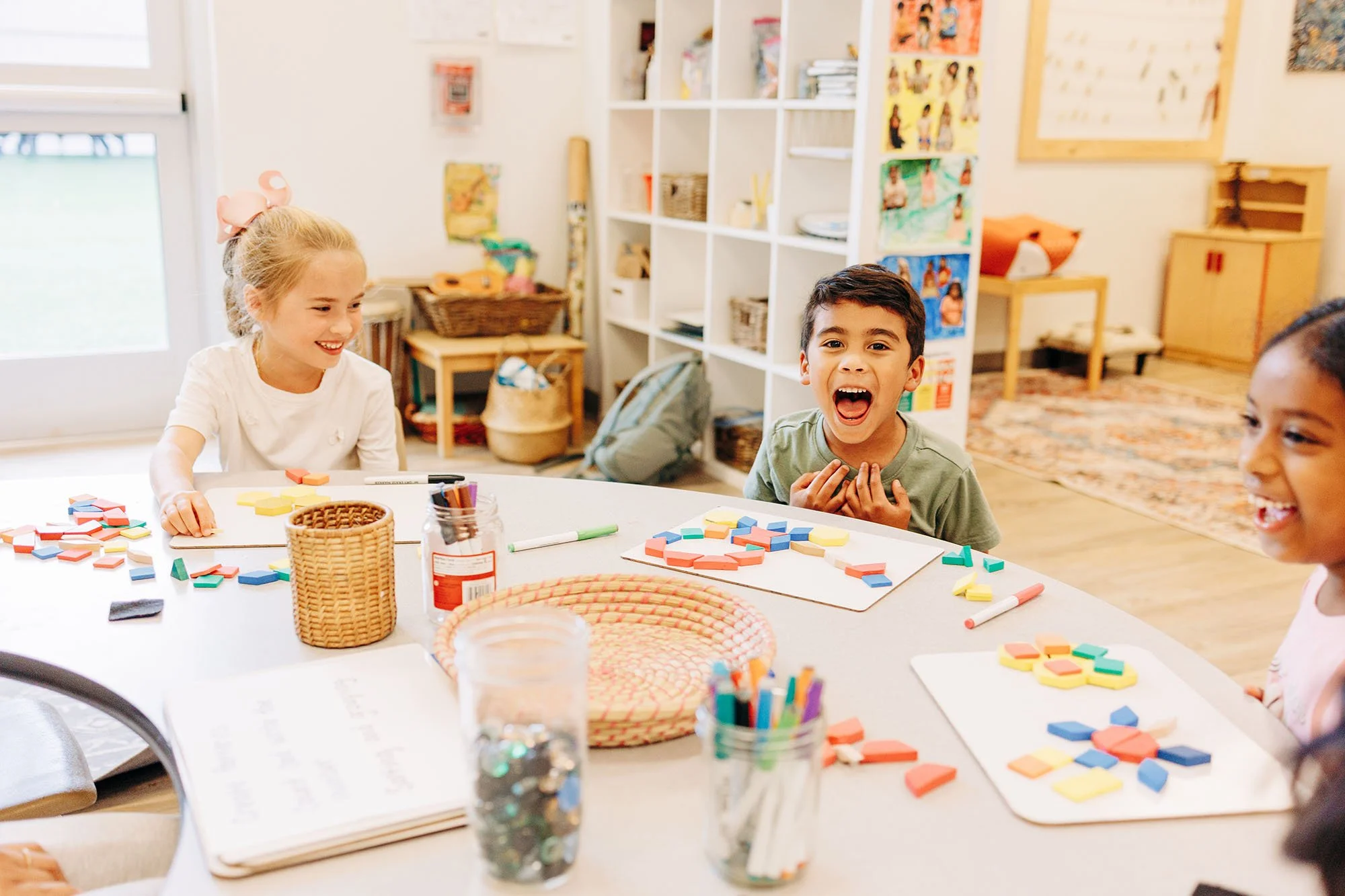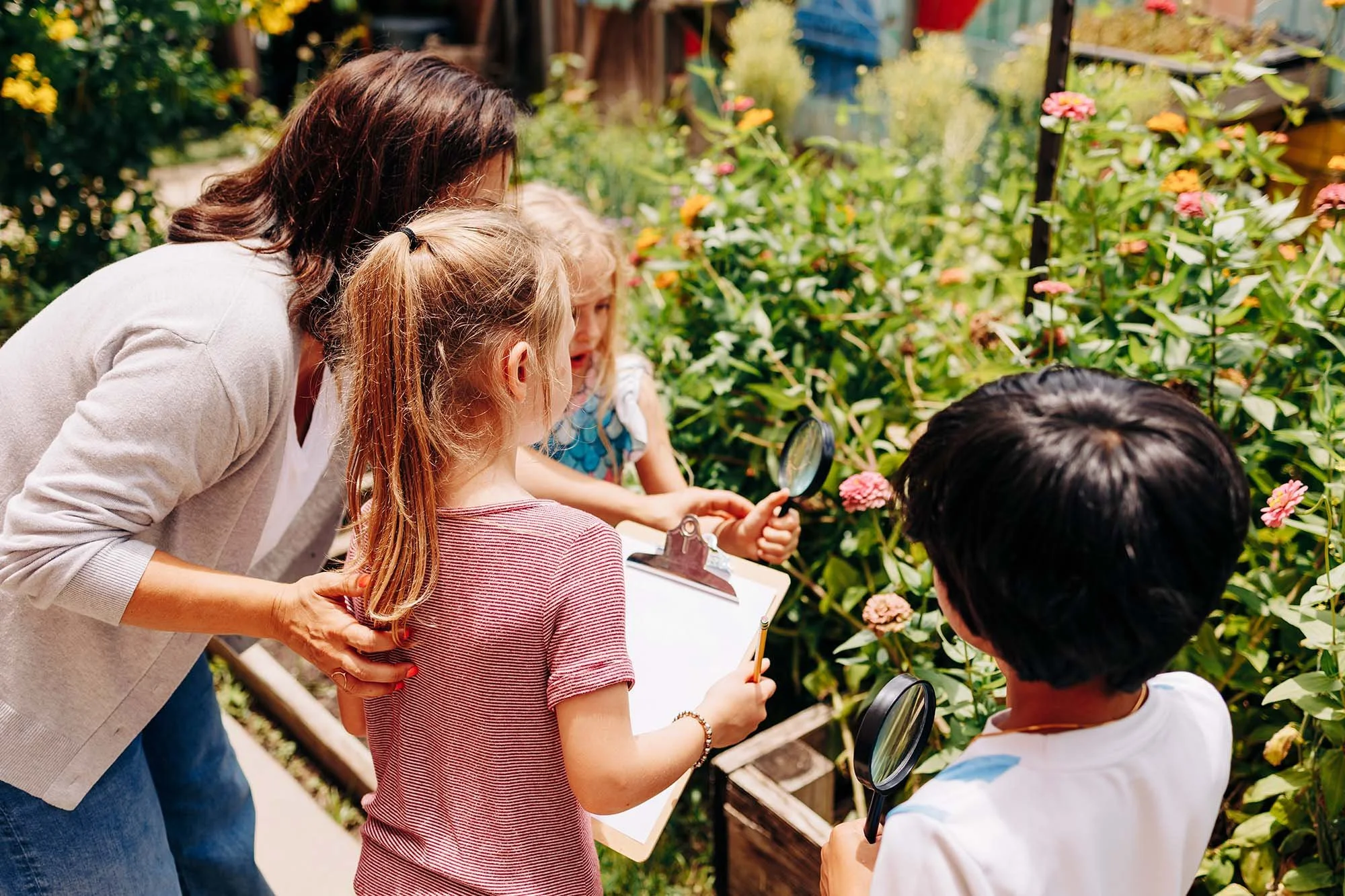Our Story
Founded in 2001 in Missouri City, Texas, The WIDE School was created with the vision to reimagine education as a journey of exploration, creativity, and real-world learning. Inspired by the Reggio Emilia philosophy and project-based learning, our school was built to honor the individuality of every child—empowering them to take ownership of their education in a nurturing, hands-on environment. Director, Maryam Lumpkin, and our Art Director, Marjon F. Aucoin have been instrumental in shaping this vision and fostering a dynamic learning community.
Serving Fort Bend Communities Missouri City & Sugar Land, we continue to evolve, providing students with the tools and confidence to thrive in an ever-changing world. We offer care and programming from infancy through high school.
ABOUT US
Our school is unique in countless ways.
"I am proud to say that our elementary through high school programs are everything we hoped for and dreamed of for all of the children in our care."
– MARYAM LUMPKIN
Our Values
At our core, we believe in fostering Wonder by sparking curiosity and a love for learning. We support Investigation by encouraging inquiry and problem-solving, driving individuals to explore new ideas. Through Discovery, we aim to create real-world learning experiences that inspire growth and innovation. We are committed to Education, empowering personal development through knowledge and creativity.
Our Campus
Powered by the evolving needs of education and a vision for the future, Maryam and Marjon began another exciting journey of building The Wide Campus in 2016. Designed as a collaborative space for educators and families, the campus serves as a hub for innovation, creativity, and hands-on learning. More than just a school, it is a place where expertise and passion come together to shape an education that meets the needs of today’s students and prepares them for the future.
Our Faculty
We are committed to fostering an inclusive and diverse community where all individuals feel valued and supported. This is where talent, imagination and professional skills are being dedicated to the teaching of our young children. We understand that children learn differently.
Through observation and listening, we encourage each individual’s unique learning styles; while focusing on their physical, educational and emotional needs. The WIDE School’s educators teach a wide range of subjects and believe that creativity and innovation are equally as important as traditional academics.
Reggio Emilia Philosphy
A child’s natural sense of curiosity about the world around them offer the adults in their presence many opportunities to help the child discover and apply concepts of every discipline. The philosophy believes that children must construct their own knowledge and they have an infinite potential to learn. Reggio schools aspire to cultivate an authentic passion and love of lifetime learning and exploration.
We are inspired by the Reggio Emilia philosophy of education. Reggio Emilia is a town in Italy. This town became the site where several educators came together after the Second World War to develop what is now known as the Reggio Emilia Approach. This philosophy sees children as capable, active learners that should be surrounded by adults that support their thinking and ideas, and be engaged by a thought provoking and motivating environment.
With this philosphy top of mind, we use the following 8 principles to teach our students:
-
Children are capable and trustworthy. We believe we are not meant to mold them into who we think they should be, but rather nurture the goodness, curiosity, confidence, competence, ingenuity, creativity, and love that already exists within each and every child. Children are seen as contributing and active members of the classroom with the rights.
-
Much care and consideration is placed into every space the children occupy. In the Reggio Emilia philosophy of learning, the environment is considered the 3rd teacher. This means the physical space around the children should look inviting, inspire curiosity, challenge their thinking, and reflect their ongoing learning processes. Each classroom has a mini-atelier with various loose parts and quality art materials such as paint, glue, markers, clay, play dough, and various other art materials that are readily available to the children . By allowing children full access to materials, we are conveying to the children that they are trustworthy and capable. Reggio children do not clamor when they see a light table full of rocks, pebbles, shells, paints, glue, markers and paper.
The children come to calmly use everything purposefully because materials have always been within their reach.
As the children explore the classroom, every area is carefully planned to offer opportunities to think, construct, create and challenge them. There are many provocations or ‘invitations’ that supports the interaction and engagement of the children with each other and with their environment on their own terms and at times without adult mediation. Our provocations are areas that are carefully set up to invite the children to delve deeper upon existing knowledge of a project. A provocation can also be a teacher designed to inspire engaged exploration of a chosen topic.
-
The Reggio Emilia Philosophy believes that children are most engaged when they are interested in a topic of study and the children should be actively engaged in making decisions about their education.
Without a pre-determined lesson plan, the day is open to start a new project or continue exploring ongoing projects.
Projects are created based on what the teacher observe the children/child is interested in, topics the children discuss, or extensions of an ongoing project. The start of a project is like the truck of a tree. As the children learn and have experiences the project can branch into other topics. Projects can last for 1 day or for 1 month and can involve the whole class or a few children. There can be different projects going on at the same time. The children’s interest dictates the project subject and academic content is infused into these projects by the teacher.
-
In the Reggio Philosophy, the teacher largely takes a supportive role versus a directive role in the child’s learning. Children are involved in chosing the content of what they want to learn and the teachers have academic goals within that content. The teacher places immense value on the interest of the child and then presents materials, books, real life experiences, ect to enrich the learning and create the best possible experience to fully engage and learn about the topic. Throughout a project, teachers help guide students to make different decisions or carry out their plans but we are careful not to take over… the projects must remain rooted in their thinking: both individual and collaborative.
When a child asks you, “Why is there a moon?”, don’t reply with a scientific answer. Ask him, “What do you think?”. He will understand that you are telling him, “You have your own mind and your own interpretation and your ideas are important to me.” then you and he can look for the answers, sharing the wonder, curiosity, pain – everything. It is not the answers that are most important, it is the process – that you and he searched together. – Carlina Rinaldi, Director of the Reggio Emilia Pre-schools
-
Probably the most well known aspect of the Reggio Emilia approach is the strong belief in the “100 languages” children use to communicate and learn. Essentially, “100 languages” symbolizes the infinite ways children express their knowledge, emotions, ideas, learning, etc and infinite ways children learn. Art is a major vehicle for this expression. We encourage children to translate their thinking, emotions, and ideas thru art. This process requires higher order thinking and evaluation. This approach gives the teachers many ways to evaluate the knowledge and thinking process of the children.
-
We believe that children deserve the opportunity to use all their senses when learning – smelling, tasting, hearing, seeing, touching and eventually creating. Real life experiences are a cornerstone of the Reggio Emilia Philosophy. Children must have an authentic avenue to apply concepts they are learning and they must use all their senses to truly understand what they are learning. It is during the experience of real life learning that childhood thrives.
Our children marvel at a hatching butterfly
Our children go to the top of a downtown high rise to see a real skyline
Our children go to the beach to make observations and collect data
Our children cook in restaurant kitchens
Our children live their learning
-
As the children are working and playing, the teachers take notes of the children’s remarks and discussions, ways they manipulate materials, knowledge they have, and what challenges them. With this information, teachers brainstorm with each other, the Director, and the Think Tank Atelieristas to devise the emergent curriculum for the project.
As a project emerges and progresses, the teachers carefully display the work of the project. This documentation allows for the children’s learning to become visible.
The pictures, writings, drawings, and creations that done our walls all speak for the children. Documentation allows for several aspects of the project work to be visible: the direction of the work, the connection, the thought processes, the explorations, the search for answers.
-
The involvement of the parents is crucial to the Reggio Emilia Philosophy. Parental involvement offers many aspects of enrichment. The child sees that the parent places value on their efforts at school. Children are very excited when they bring in something from home to contribute to projects and this fuels their efforts. Parents are seen as resources with their own areas of expertise and passion. Parents are welcome to share their knowledge with the classrooms if they chose. When this happens, the children’s horizons instantly expand.


